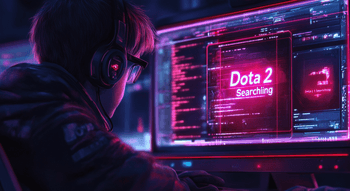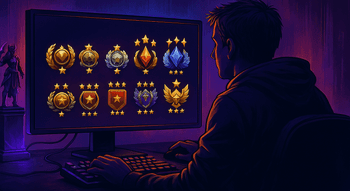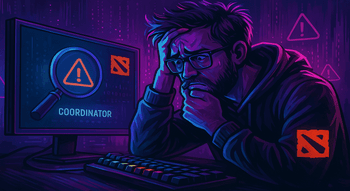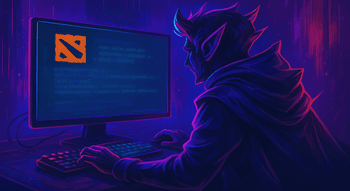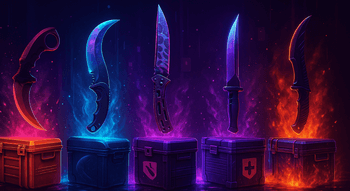Dota 2 Positions: A Complete Guide to Roles in Dota 2
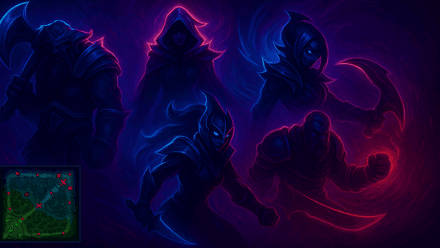
Understanding Dota 2 lanes and roles is one of the keys to your team’s victory. Without it, you won’t be able to develop a proper strategy and earn enough gold and experience, which could lead to your enemies dominating the map.
All in all, there are five positions in the game, and your goal is to understand their basic responsibilities, strengths, and weaknesses. Luckily, our Dota 2 hero roles guide is here to help you with this task.
Core Positions
It’s possible to divide Dota 2 roles into two types — core and support positions. Core roles typically require exceptional skills, in-depth game knowledge, and the ability to perform well both independently and in team settings. We’ll focus on three core Dota 2 positions before discussing the essential role of Supporters in ensuring team success.
Carry
The “Carry” (or sometimes it’s the “1st position”) is undoubtedly the most crucial role in the whole team, responsible for delivering significant damage to the enemies during teamfights. Thus, a hero in this position must reach the highest level in the team as well as acquire powerful artifacts to maximize the impact.
Often, the position of Carry is combined with the optional role of a Pusher, which involves destroying towers on the enemy lanes. Nonetheless, not all heroes who are perfect Carries excel as Pushers.
The first position starts the match on the easy lane, which is the bottom lane for Radiant (Green) and the top lane for Dire (Red) sides due to a number of benefits:
- Access to neutral creep camps in the nearby forest, which allows one to farm more gold and XP.
- More efficient and easier allied creep blocking and pulling.
- A nearby Twin Gate, which you can use to quickly move to another lane without using a teleport scroll.
- Lotus Pool is located closer to your side, allowing you to quickly restore health and mana.
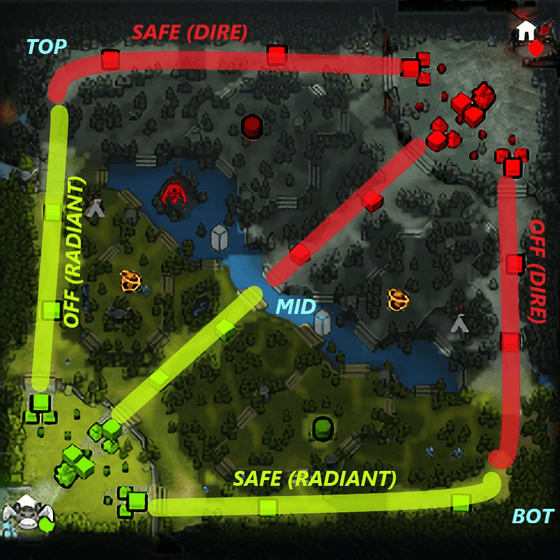
Considering that Carry is one of the most important positions in Dota 2, it is no wonder that the easy lane is an ideal starting location for this role. Moreover, during the Laning phase (first 12–15 minutes of the match), Carry’s main task is to kill as many creeps as possible to earn enough gold to buy expensive items. Also, a hero in this position should avoid death at all costs, even if it means their Supporter dies protecting them from enemies.
Although Carries aren’t very strong at the beginning of the match, their power grows as they purchase valuable items and level up their skills. So, after the twelfth minute of play, they may be finally ready for serious fights.
At the same time, when it comes to teamfights, Carries should avoid initiating combat. Playing in this position, yyou should always prioritize your own survival to remain stronger than the enemy Carry.
Finally, the important question is when to pick Carry and which heroes are the best for dealing with its task. Thus, choosing Carry as the fourth or fifth character during the Pick phase is an ideal option because you don't want to be counterpicked. As for whom to pick, we’ve divided Dota 2 heroes by position to simplify your choice:
- Strength: Chaos Knight, Lifestealer, Sven
- Agility: Gyrocopter, Morphling, Weaver
- Intelligence: Crystal Maiden, Dazzle, Witch Doctor
- Universal: Broodmother
Midlaner
It’s impossible to wrap your head around the review of roles in Dota 2 without highlighting the Midlaner. Its name literally hints that a character in this position kicks off the match on the central lane, also known as “Middle” or “Mid.”
As a rule, this role is chosen by an experienced player who doesn’t need support during farming. It’s also important to pick a hero with enough damage to pull off last-hitting creeps. Further, they should be able to hold their ground against the enemy, ideally keeping them at bay from water runes and allied creeps. Thus, it’s a good idea to opt for characters with significant AoE damage, even without expensive artifacts.
For a Midlaner, it’s essential to come out on top of their opponent on the lane. This means that your main task is to kill more creeps than your enemy. Also, whenever you can, try to eliminate your take down (or at least chip away at their health) to stop them from farming and pushing the lane. Another great life hack is denying your own creeps, as it’ll also reduce the XP and gold earned by your enemy.
Additionally, you should never forget to keep an eye on the mini-map to track the opponents on other lanes. Even if they’re at a low level, some of them might head over to the Middle to back up their Midlaner, especially if the enemy team includes characters like Pudge and Techies.
Since heroes on the central lane usually stand alone against their opponent, they gain experience way faster than their teammates. Thus, as soon as you hit the sixth level, it’ll be a smart move to head out and gank enemies at the bottom or the top. They’re likely to be only level 3-4 during your sneak attack, and if you play your cards right, they won’t survive. Ganking helps you shut down enemy heroes’ farming and XP gains. Plus, it creates breathing room for your allies to earn more gold and push their lanes.
If you’ve already taken over the lane (destroyed the first tower), you may carry on your momentum by keeping the pressure on the enemies in other locations. By now, you’ve probably realized that the first 15–20 minutes of the match set the stage for a Midlander. Nonetheless, even when your Carry farms enough gold to buy the necessary artifacts, your presence will still shine through during teamfights.
Now, it’s time to nail down the right hero for this position. If you play as a Midlaner, it’s better to be the third or the fourth player to make your pick during the selection phase. If you’re unsure which character can stand up to the enemy pressure on the Mid lane, our guide to all Dota 2 roles explained is here to back you up:
- Strength: Huskar
- Agility: Ember Spirit, Sniper, Viper, Shadow Fiend
- Intelligence: Outworld Destroyer, Storm Spirit, Tinker, Zeus
- Universal: Invoker, Void Spirit
Offlaner
Unlike two previous Dota roles, an Offlaner doesn’t focus on damage. Think of it as the “tank” from old MMORPG games. This position requires choosing a hero with high health, a strong ultimate ability, and the capacity to take control over the enemies during the teamfight. These features allow Offlaner to step into one of his priority tasks — fight initiation.
The hero in this position kicks off the match on the hard lane, which is the top lane for Radiant and bottom lane for Dire. With their high health pool, they can stand up to the enemy Carry and Support there while also farming and gaining experience. Plus, thanks to recent map updates, an Offlaner can sneak into neutral farming spots on the enemy side without getting spotted by the opponents.
During the Laning stage, the Offlane role in Dota 2 involves chipping away at enemy resources and avoiding frequent deaths. Also, ideally, you should team up with your Midlaner for ganks and aim to purchase at least one valuable artifact within the first 20 minutes.
One of the top tips in any Dota 2 Offlane guide is to save up for a Blink Dagger. This item improves your mobility, making it easier to jump into fights and find the perfect position before engaging. At the same time, don’t forget that it’s essential to sync up your actions with other teammates because Offlaners are unlikely to take down an entire enemy team on their own.
The choice of the right hero for this role is crucial. Usually, Offlaners are the third or the fourth players in the team during the draft. It’s recommended to select one of the following heroes:
- Strength: Centaur Warrunner, Mars, Underlord, Tidehunter, Axe, Bristleback
- Agility: Hoodwink, Medusa
- Intelligence: Ringmaster, Necrophos
- Universal: Dark Seer, Beastmaster, Brewmaster, Sand King, Enigma
Support Positions
Remember that there are no useless Dota2 positions. Although many players, especially beginners, might brush off playing as Supporters, their contribution to the team’s victory is second to none.
Thanks to them, you’ll have a vision of the most important areas of the map. Furthermore, talking about Dota 2 heroes by role, it’s essential to mention that Supporters protect Carries and help Offlaners during the Laning stage. They also shell out gold for essential items such as Healing Salve, Blood Grenade, and Clarity. However, it’s vital to understand the difference between the two Dota 2 Support roles.
Soft Support/Roamer
Soft Support is the first of two secondary positions in Dota 2. This role is a unique combination of an assistant, a fight initiator, and even an attacking hero. Playing as Soft Support requires a good grasp of game mechanics, resource management, and solid gaming skills.
Although Soft Supports can’t dish out as much damage as core Dota positions and can’t initiate fights like Offlaner, they still play a pivotal role. First of all, it allows you to roam around the way you want to play during the Laning stage. For example, you may opt for a Roamer role, which involves moving along all three lanes, supporting your allies, and helping them kill enemy heroes. In this case, make sure that your Offlaner is able to hold their own while you’re away.
Alternatively, you can settle into a more passive Soft Support role. In this case, you’ll assist your Offlaner, stack neutral camps, block allied creeps, and keep enemies from farming. Plus, you may need to place wards to provide your teammates with the vision of the most important parts of the map.
When it comes to teamfights, you’ll be responsible for efficiently preventing enemies from performing dangerous attacks. Try to disable the most dangerous enemy heroes and eliminate their support. Additionally, don’t forget about protecting your Carry and Midlaner. If you face a choice to die but save your core heroes, you should sacrifice your character’s life without hesitation.
Due to the uniqueness of the fourth position, players may opt for different heroes. The main criterion is to choose a character that should pack a punch even without artifacts, because most of the gold will be received by the first three roles. You also should be the first or the second member of your team to select a hero during the Pick Phase.
If you decide to play as a Roamer, make sure there is a stunning skill. On the other hand, players who opt for a Soft Support role may choose heroes with proper supporting abilities:
- Strength: Pudge, Tusk, Spirit Breaker
- Agility: Bounty Hunter, Mirana
- Intelligence: Enchantress, Nature's Prophet
- Universal: Chen, Snapfire
Hard Support
Finally, we get to the last role in our guide of all Dota 2 positions explained. First, it stands to mention that in comparison with the older game version’s hard supports, nowadays, it’s way simpler to assist your teammates. At least there is no need to purchase and upgrade a courier! Unfortunately, many players still think that hard support is an extremely boring and useless role. Of course, this statement is far from the truth!
Hard Support acts as the guardian angel of the whole team, and the number of this hero’s responsibilities is truly insane, as it includes:
- Supporting the Carry in the early stages of the match;
- Placing Observer and Sentry wards;
- Keeping tabs on enemy activity across the whole map;
- Stacking neutral creep camps;
- Disabling opponents during fights;
- Assisting the whole team with key items and skills.
This role occupies fifth place among Dota position numbers. As a rule, Hard Supporter fights on the lane together with a Carry. During this stage of the match, his main responsibility is to attack the enemy Offlaner and prevent them from killing allied and neutral creeps.
If you successfully harass your opponent, you’re likely to face a situation where your creeps start pushing the lane, getting closer to the enemy's first tower. Thus, your Carry may start losing gold and XP points. That’s where you should come into play once again and start blocking allied creeps or pulling them. Of course, if it happens that your Carry is in danger, you should save them even at the cost of your character’s life.
During the teamfights, your focus should be on backing up your allies and, if possible, locking down enemy core heroes. It’s better to eliminate them first, as they’re the most dangerous for your team.
One of the most resource-intensive responsibilities is warding. While Observer wards are free to buy, you’ll need to pay 50 coins for Sentries, which sometimes may be destroyed by the enemies in seconds after you’ve placed them. Thus, you’ll need to budget wisely to maintain map control throughout the match. Nonetheless, it’s still important to continue this ward “fight” during the whole match, as it allows you to see enemy Observers and invisible units.
You also won’t be able to farm a lot while playing as Hard Support. One more factor is that your character will be rather powerful at the beginning of the match, but soon, their strength will start slightly decreasing in comparison with heroes in other positions. So, who is the best character to deal with Hard Support’s duties? Here are the top picks:
- Strength: Treant Protector, Ogre Magi, Omniknight
- Agility: Hoodwink
- Intelligence: Crystal Maiden, Warlock, Lich, Shadow Shaman
- Universal: Techies, Io
Synergy and Role Flexibility
While we’ve outlined a lot of heroes for specific roles, the reality is that there are no fixed Dota 2 lane positions for certain characters. Even unconventional picks like Io as a Carry can sometimes pay off.
On the other hand, your hero’s effectiveness hinges on your personal skills, strategic planning, and your chosen item and skill builds. Also, never forget about teamplay — it’s essential to pair up heroes that can perfectly partner with each other. For example, if your Carry has picked Juggernaut, it’ll be a good idea to opt for Crystal Maiden as Hard Support. Due to her mana regeneration passive ability, Yurnero will be able to spam his Healing Ward more effectively.
Flexibility is another key factor. Some strategies may require players to step into unfamiliar roles. For example, it may happen that your Soft Support might need to assist the Midlaner, and in this case, your ally on the hard line should be ready to withstand the pressure of two enemies. Of course, the particularities of such a strategy should be hashed out during the Pick phase.
If you aspire to step up your game and to become a true Dota 2 pro, try experimenting with each role. Build your own list of preferred heroes, test different builds, and work out innovative strategies. With dedication and practice, you’ll soon be tearing through matches and earning respect as an undefeatable player.



